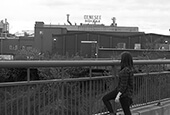Genny Tales
Conversations with Dean Jones & Paul Constantine
Interview No. 200
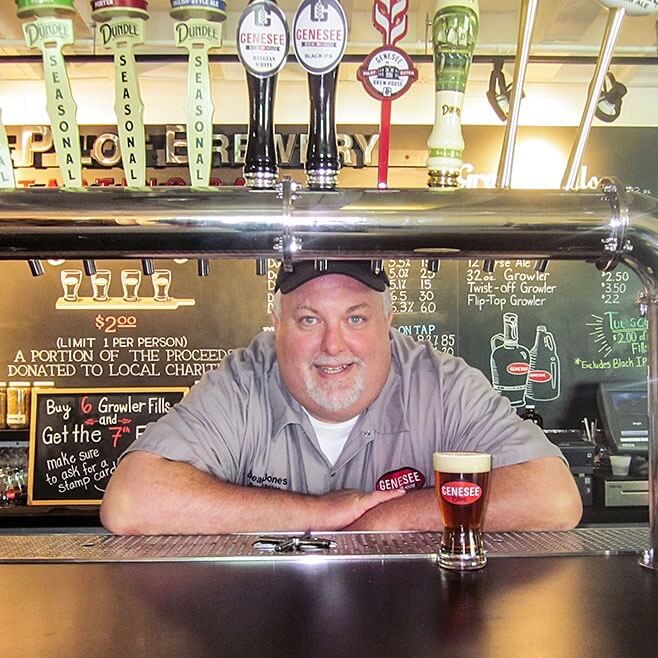

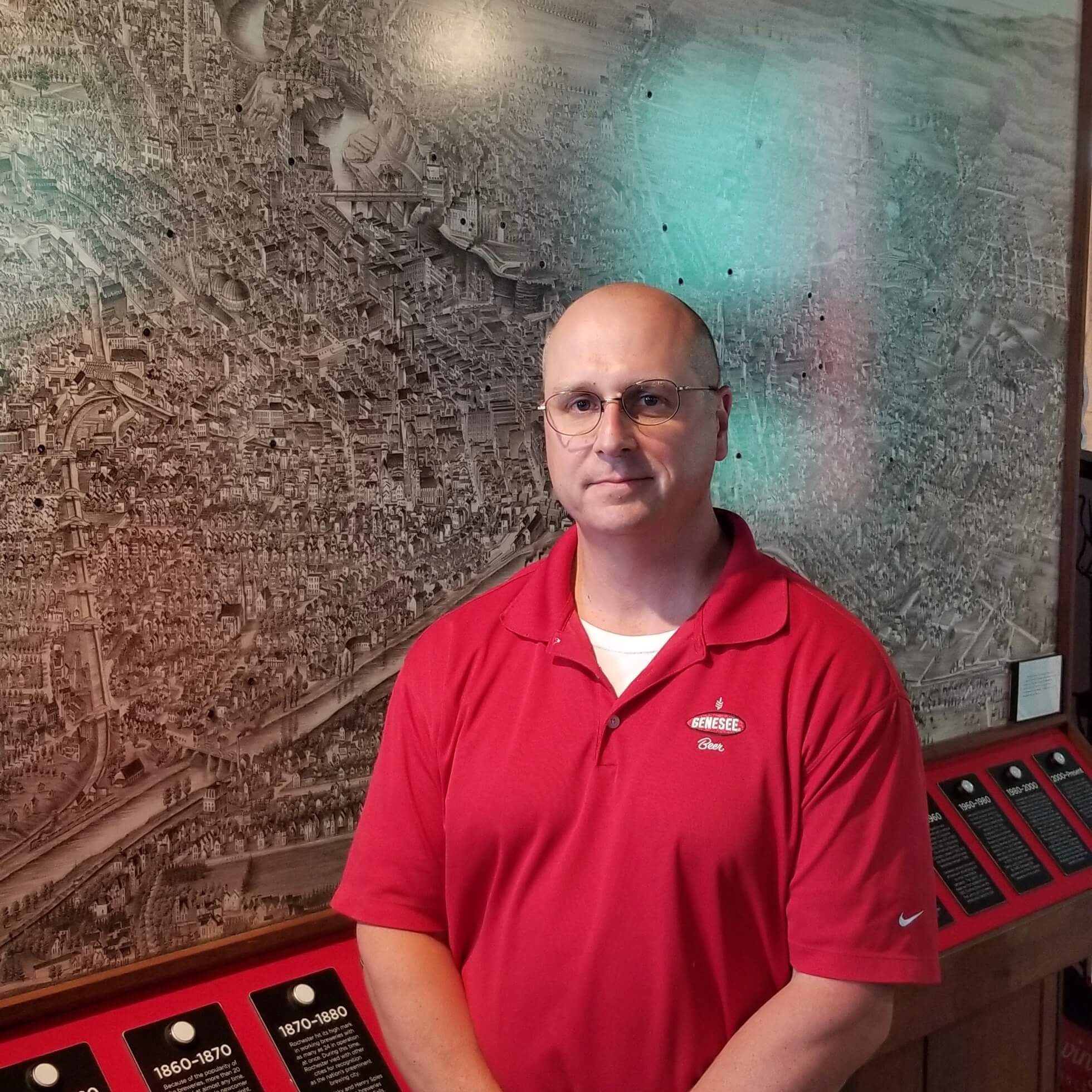

Interview by Emily Hessney Lynch.
Published September 27, 2019.
Part I - A Conversation with Paul Constantine
What's your title and role at Genesee?
I’m the Retail Manager; I started as an intern. When we opened the Brew House in 2012, I was responsible for putting together content for the museum, so I became our unofficial historian.
What was it like to put together the museum?
It was great, though daunting at first, even though I have a master’s degree in history. I really wanted to cover the city’s brewing history, so I looked for any kind of story I could find about any of the breweries. I also talked to former employees to hear their stories. There’s an affinity for the brand; it’s part of Rochester and the region. I think part of that is the nature of the product—it’s beer, you celebrate with beer, it’s right there in people’s memories.
Genesee is one of the few breweries that goes back to brewing’s 19th century heyday in this city. People really cared about it and wanted it to succeed. It was fun to bring that to life through this museum. I worked with an exhibit design company on the hands-on pieces you see in the museum.
How did Genesee come to be founded?
In 1857, the brewery that later became Genesee was founded. It was purchased by an entrepreneur in 1878 and renamed Genesee, and it’s been in this location ever since. During prohibition, they became the Genesee Company. They were throwing different business ideas at the wall to see what would stick. They even tried refining oil, but nothing took off. At one point in 1928, someone had snuck into the brewery and was using their vessels to brew a corn moonshine beer!
Louis Wehle brought the brewery back. During prohibition, he had operated bakeries and was very politically active, but he sold that business and re-invested in beer making after prohibition ended.
Tell me about the role of High Falls and why it was a good place for a brewery.
Breweries sort of clustered along the gorge early on. They never used the water power, but they stored beer down in the gorge. There are tunnels that go from somewhere in the brewery. It was cool and damp year round, before refrigeration existed.
What kind of beer did they brew in the early days?
Pilsners came on the scene in the 1870s and quickly became the dominant style. Genesee’s flagship was their own lager. They also had a beer called Old Stratford Ale that was big right before Prohibition. I also learned that they did seasonal bock beer as far as the 1880s!
What was life like in Rochester in the early days of Genesee?
There were longer workdays and people lacked the comforts of television or radio. Politics were big, and almost a form of entertainment. Voter turnout was lightyears ahead of where we’re at now. The middle class was seeing improvements in their standard of living, boosted by technological advancements. Church was a bigger part of life then too, because it brought people together.
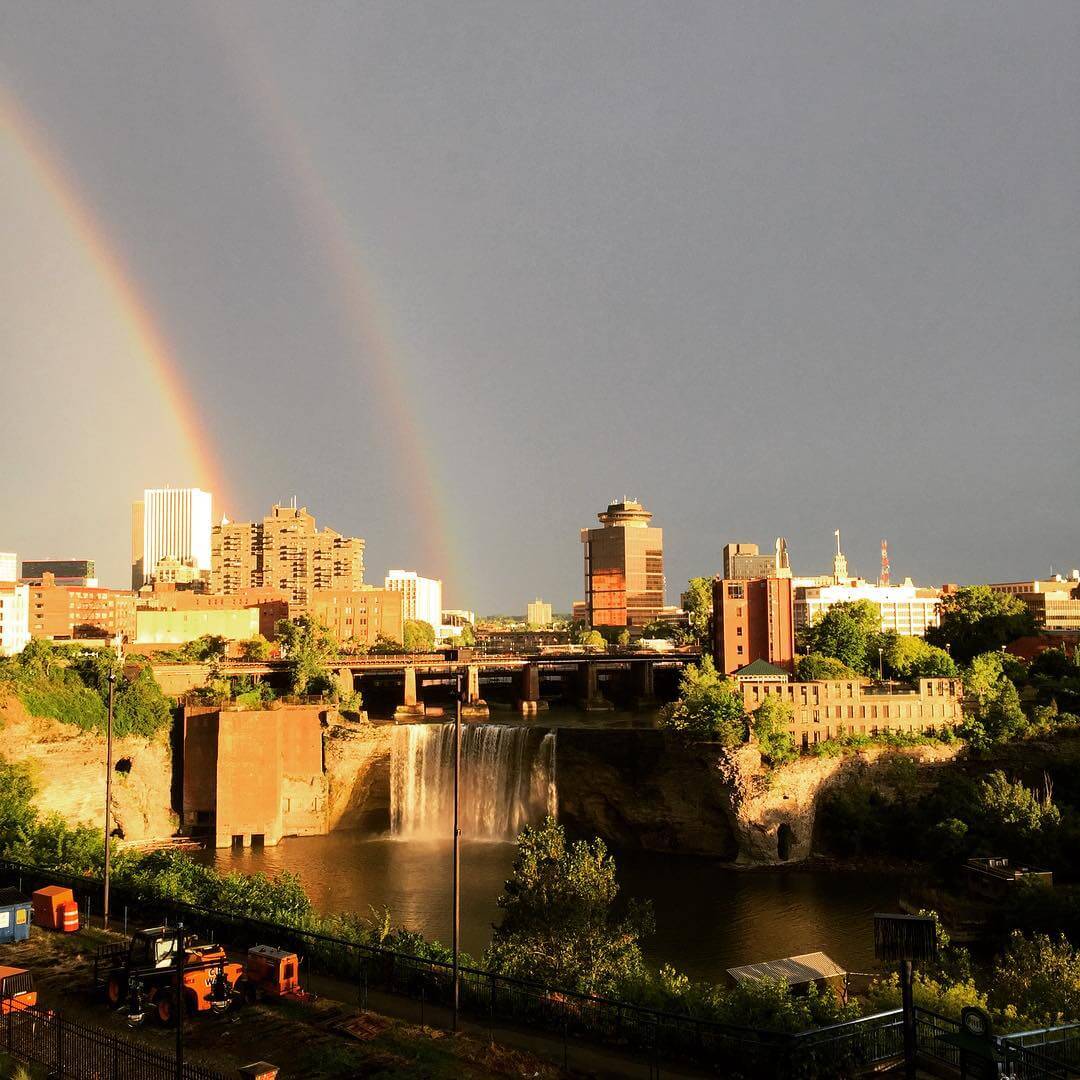

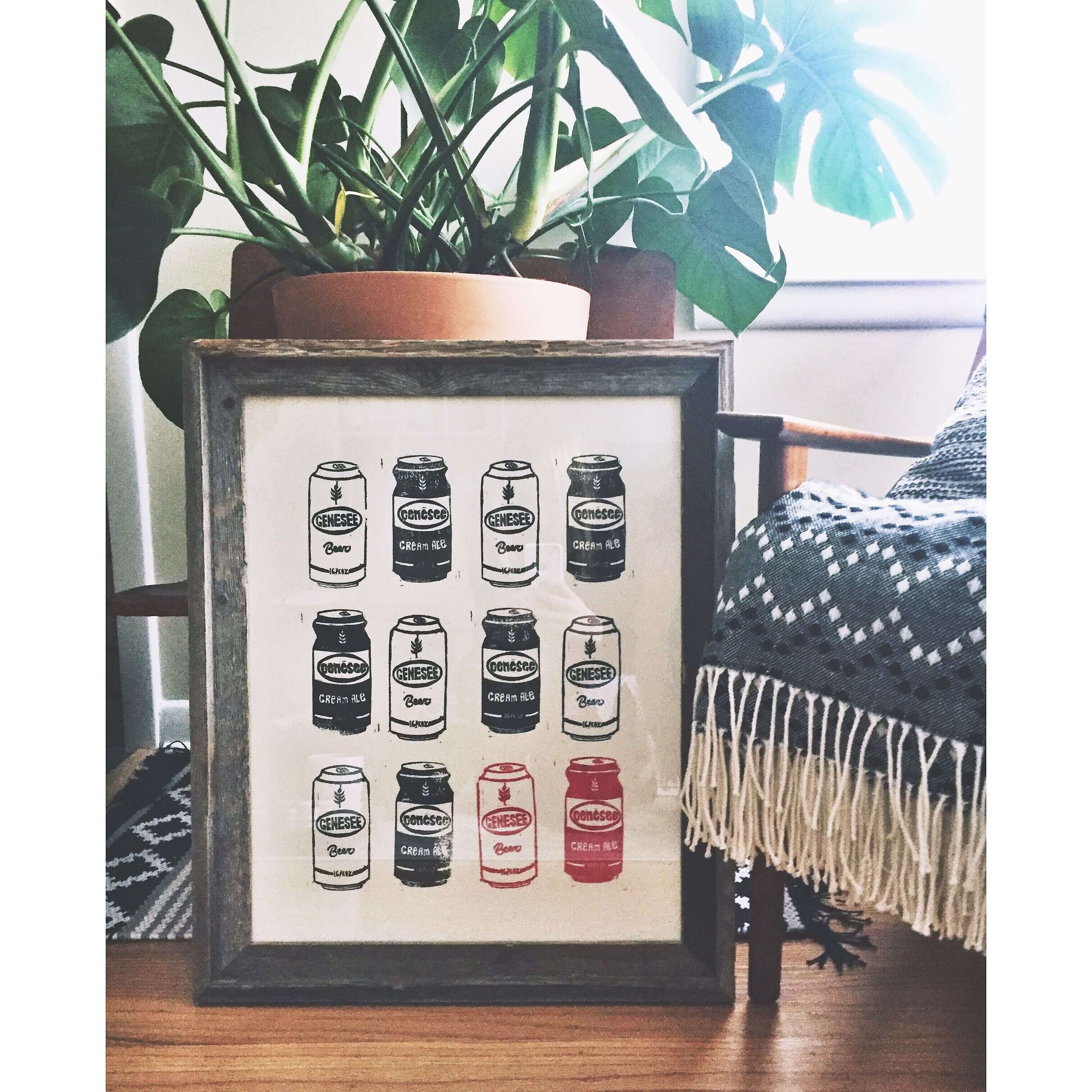

How did Cream Ale come to be? What has made it so iconic?
It’s one of three standard American styles. Genesee made one that predated the cream ale you can buy now, and that was just after World War II. Today’s cream ale came out in the 1960s. Everyone made pilsners back then. Home brewers in the 70s have a lot to do with the rediscovery of different styles and the increased variety on the market now.
Back then, cream ale was something different! It was a lighter ale, fuller bodied, and a bit sweeter. It was marketed to the so-called yuppie crowd in the 60s, an upwardly mobile generation, and it was a big hit. For awhile, it was the #1 selling domestically produced ale coast-to-coast.
Cream ale is still alive and well! It’s got that connection and represents a little slice of home to many people.
Are there any remarkable stories you've heard in your role that you'd care to share?
What I still enjoy most about my job is the stories. When people say “this place brings back memories,” they’ll launch into stories about picnics, uncles who worked here, and so much more. It’s not uncommon for people who work here to have fathers and grandfathers who worked here. It’s a family atmosphere.
There really is a connection between the brand and the community. I’m proud of where we are today. We really put an effort into everything, it’s not just lip service. We do neighborhood cleanup and volunteer at Foodlink—those things are just part of the culture here. We’re producing great beer, doing the right thing, being responsible, and being a good neighbor.
Part II - A Conversation with Dean Jones
Where are you from? How did you end up in Rochester?
I’m originally from Erie, Pennsylvania. I’ve been brewing beer for almost 30 years now and have traveled the world doing it. I’ve installed breweries, trained brew masters, and more. I was doing some consulting work and came up to Rochester to work with a company contracting out of Rohrbachs. Jim McDermott encouraged me to come interview for the pilot brewer position at Genesee, and I came over and interviewed. I’ve been here for 7.5 years now!
What were your first impressions of Rochester when you moved here?
I feel like I had an inside take on it and knew how cool it was before I moved here. It’s one of the coolest cities and I get to brew beer 100 feet away from the highest falls east of the Mississippi! My office is a table up on the roof, eating lunch and drinking beer.
What's your favorite part of living in Rochester?
There’s so much different culture in Rochester, and so much food and beer to experience. About 25 years ago, there were less than 25 breweries in the nation. Now, we have 35-40 in Rochester, and there are over 8,000 breweries nationally. Rochester has started to become a beer destination in the northeast, and we’re known for having really diverse beer. You have places opening up like Fairport Brew Haus, focusing on German lagers. Triphammer is making hard seltzers and crazy New England IPAs. Swiftwater is making barrel aged sours. Rohrbach’s is making cloudy milkshake IPAs. Then there are old favorites like Roc Brewing doing glitter IPAs and other crazy things. The beer scene is evolving so quickly.
We also have the longevity of theatre, the science museum, and so much other interesting stuff to do. You can go down to Watkins Glen in an hour and a half drive, or catch a game in Buffalo. It’s always nice to see the Amerks play. There is so much to do in a concentrated area, it’s mind-blowing.
How did you become a brewmaster?
I had an interesting path. I got out of the Marines and started studying biochemistry at Penn State. I was working at a gun store, and a guy I sold ammo to was the Brewmaster at Happy Valley Brewing Co. I used to go there for pizza all the time, and I got hooked on the beer too. I saw my customer from the gun store working there one day, we locked eyes, and he told me, “Come on back!” I quit the gun store and became his apprentice.
I fell in love with brewing and never graduated from Penn State. I got accepted to a brewing institute and the rest is history.
What makes a good beer?
There are all kinds of good beers. What you consider a good beer is totally dependent on your own palate.
Personally, I’m not a sour fan! I was trained by a German brewmaster, and to them, sours are a defect. But younger people now are exposed to crazy styles earlier. The crazy stuff wouldn’t sell back in my day. What’s going on now is crazy inventive and creative—like the Count Chocula beer at Prison City!
I do the same here, twists on normal beers. I love when people say, “Holy cow, that’s from Genesee?!” The salted chocolate caramel porter was the best selling beer at Wegmans and nothing’s beat it since. Everything is moving so fast now, the attitude is, “What’s new?” No one is buying a case of anything, and it may hurt the market in the long run. My assistant challenged me to come up with a crazy beer, and bet that it had already been made. I brainstormed a long list of ingredients, we checked Untappd, and it already existed.
I think that individual brewery taste will come back. Before, everyone was making pale American lagers, and they all had distinct tastes. In the craft beer market now, everyone is making milkshake IPAs that all taste different. When you turn around, German beer will be back in the limelight, with a two ingredient pilsner that makes people say “wow, that’s great.” Pilsner is one that takes real talent to brew. It shows that every ingredient you use is important; if you make one mistake, it shows up in the final beer.
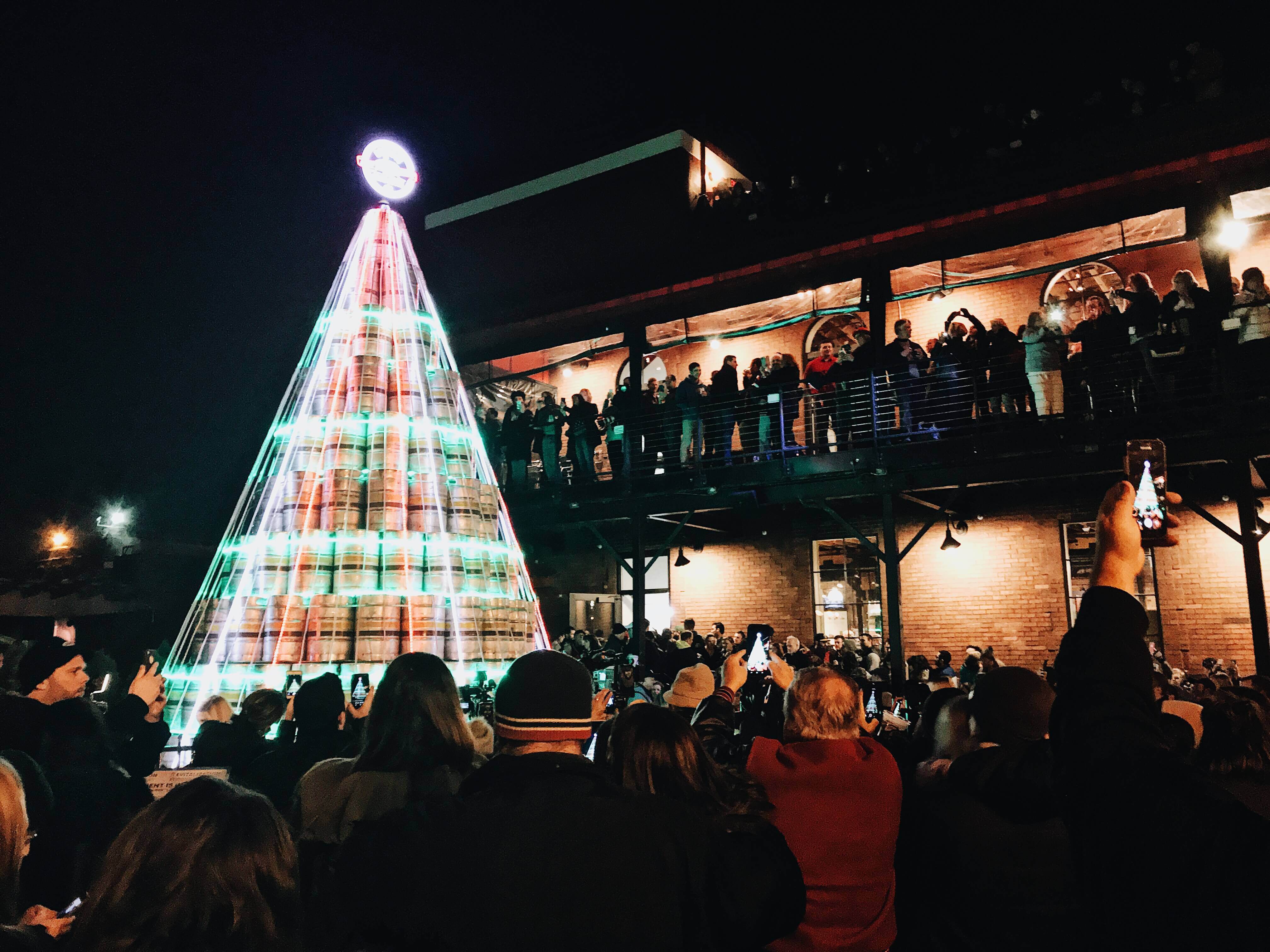

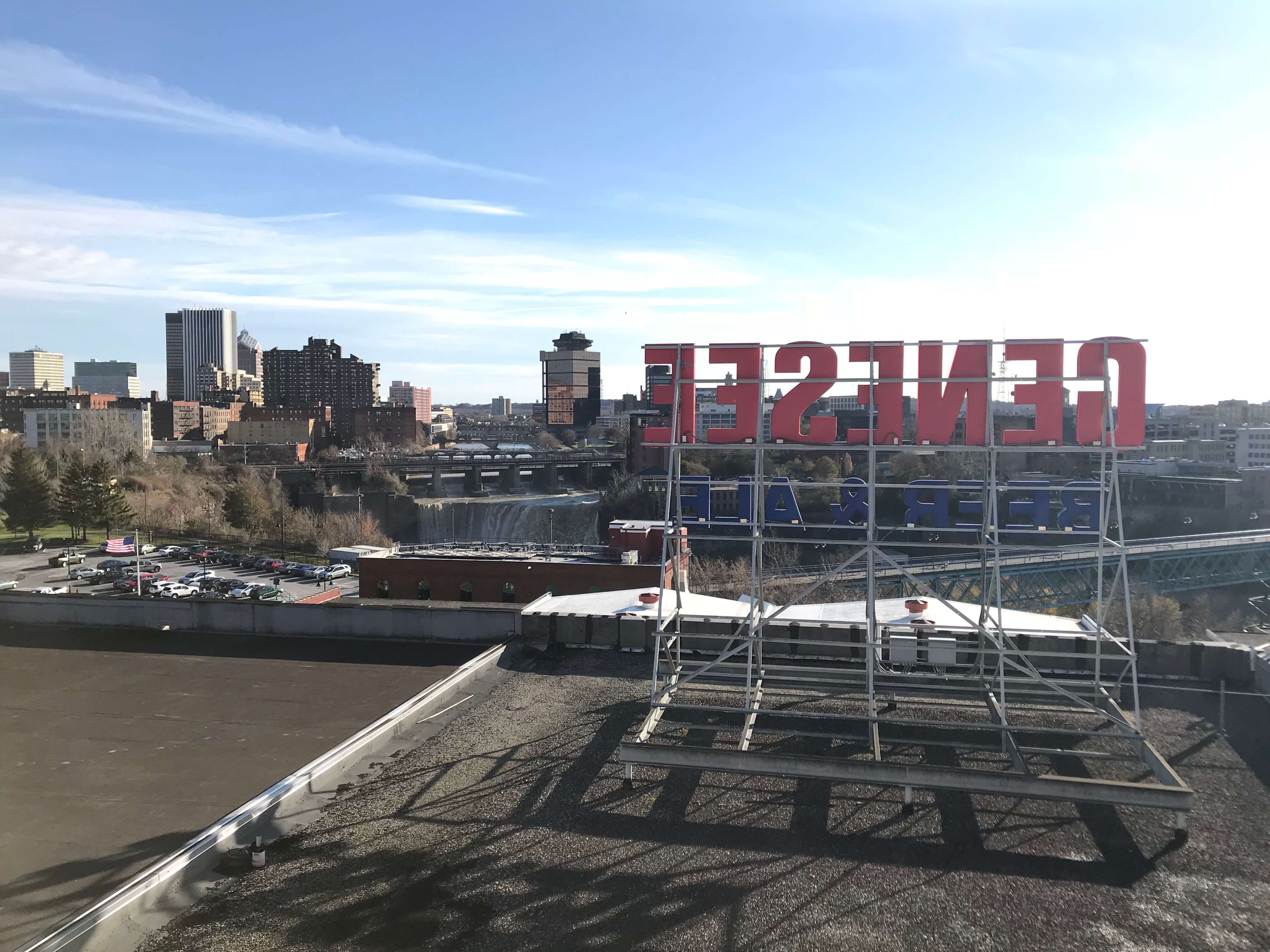

What's your favorite beer you've ever made?
I appreciate the beer I make, and then I’m done with it. I love Scotch Ales and Pilsners. We made a Northern German Pilsner two years ago at Flour City Brewers Fest—all the brewers came over and loved it. It kicked really quickly, that was fun. Our brewing community is really small, we’re all friends. I get tired of drinking my own beer, so I’ll stop at Roc Brewing, Rohrbach’s, or Swiftwater on my way home. I never have to pay. It’s nice to have variety; I can analyze and learn from it. I love that in our brewing community, we openly share. It’s kind of rare. We’re a great community that you don’t find elsewhere. We share both ingredients and information.
How many iterations does a beer go through before it's ready to be mass produced, bottled, and sold?
We’re always under the gun, you don’t get too many shots at it! We have a micro pilot brewery that makes one half barrel at a time. For example, if I’m trying something like adding lilac to a beer, I try it in the micro pilot first. I made an Imperial Lilac IPA and had never brewed with lilacs before! It had nice little floral components. I took it to Lilac Fest, and it was polarizing—people either loved it or hated it. I got everything from “best beer ever” to “tastes like my dead grandmother.” It just depends on your palate. I haven’t brewed with lilacs since then!
Has the reception of any beers you've made surprised you?
Our Other Half collaboration that was a twist on Genny Cream Ale. I was surprised that 550 lined up across the bridge to get it. It was mind blowing for me. It was really fun to work with Other Half. Those guys love cream ale! They don’t drink a lot of their own beer, and vice versa. We had a nice mutual appreciation for each other's craft.
What's it like to brew new beers for a brand that has such a legacy?
It’s intimidating, to be honest. The fact that you get to take a cream ale recipe from Gary Gemmen in the 60s. That’s 50-60 years of brewing tradition that they’re allowing me to mess with. I have this reverence for the brewmasters that were here before me. There’s a vanguard of tradition you have to protect! I don’t want to taint that memory of cream ale. It’s quite an honor, and challenging but fun!
We did a dry hop mosaic cream ale that was unfiltered. Cream Ale is clean, crisp, flavorful. Adding a yeast component of unfiltered plus mosaic hops, plus dry hopping it, really jives.
What Genesee beer pairs best with a garbage plate?
The original Cream Ale!
What's the most interesting thing that's happened to you as brewmaster?
People can lean over rail and talk to me. Once, I saw a guy buying a pack of cream ale, and I said, “Oh, so you’re a cream ale lover.” He said, “Me and my dad.” It was his dad’s funeral, and they were burying cream ale in his casket. Genesee has been around for so long and supported so many families in Rochester. There’s a long history and love of this brewery. It touches my heart every day that people still love Genesee and that we have a place in their heart. We’re New York State’s oldest brewery, and it’s just damn cool.
Genessee Brewery is a Rochester institution beloved by many. Cheers to our 200th interview!
For more, visit our Instagram.

